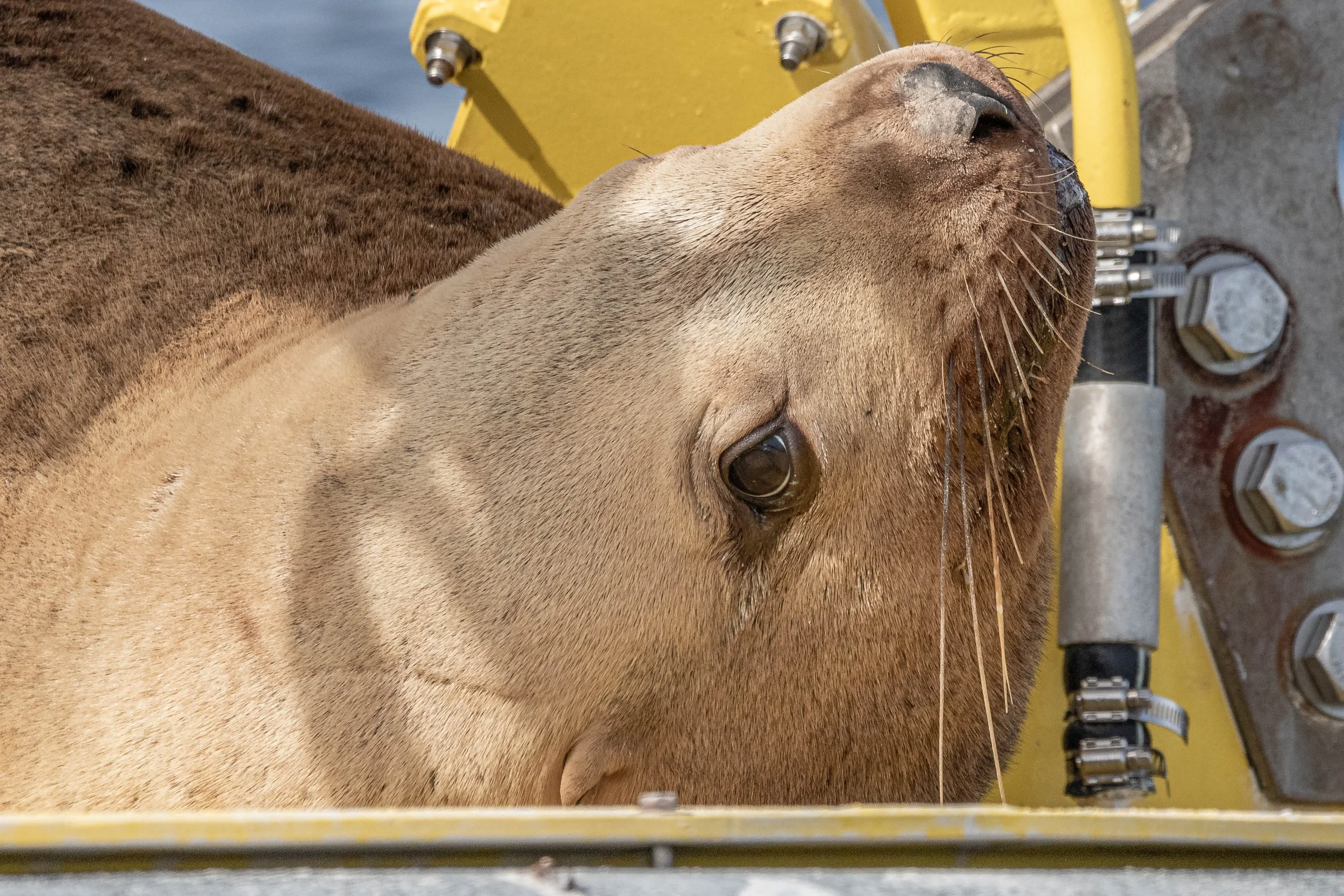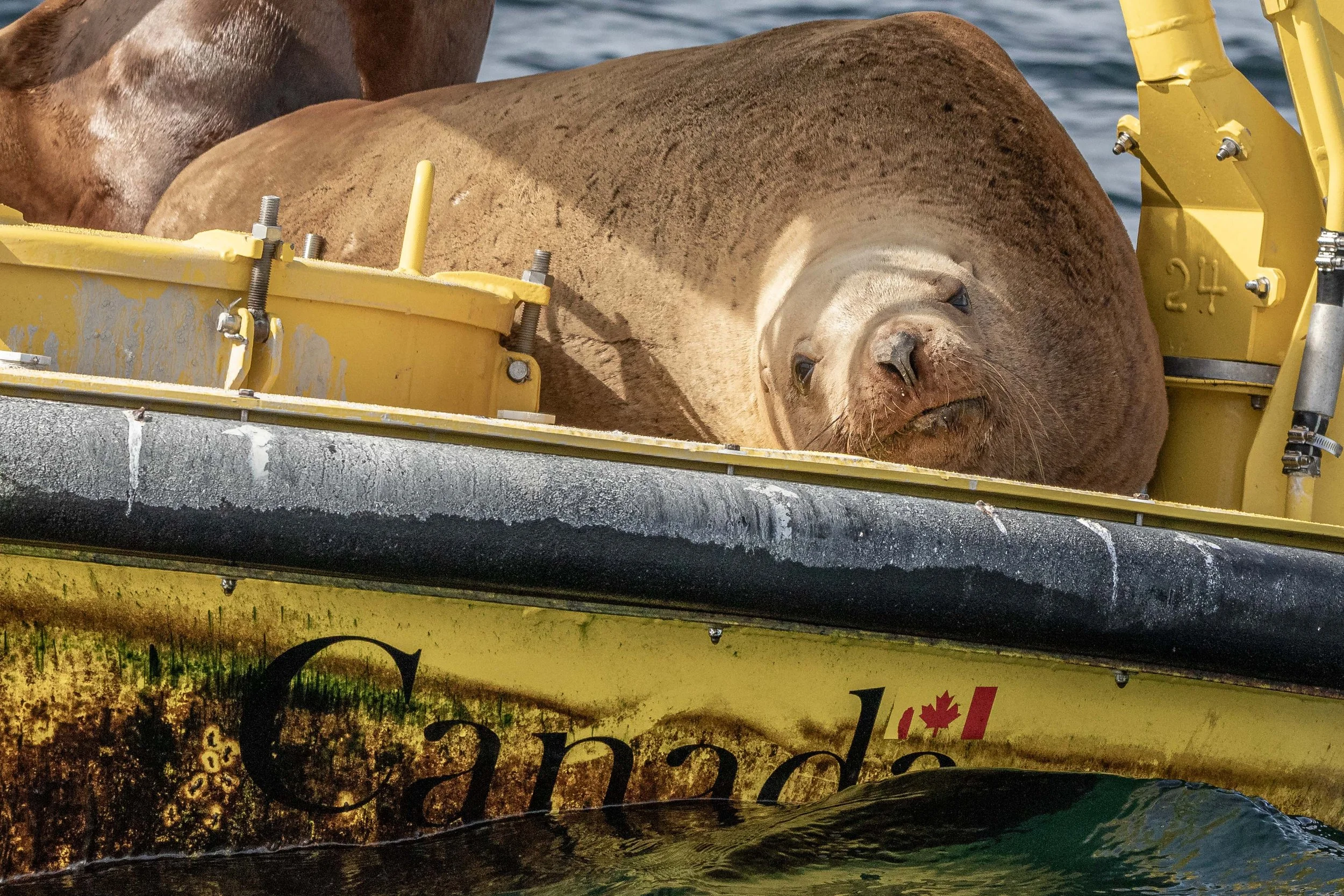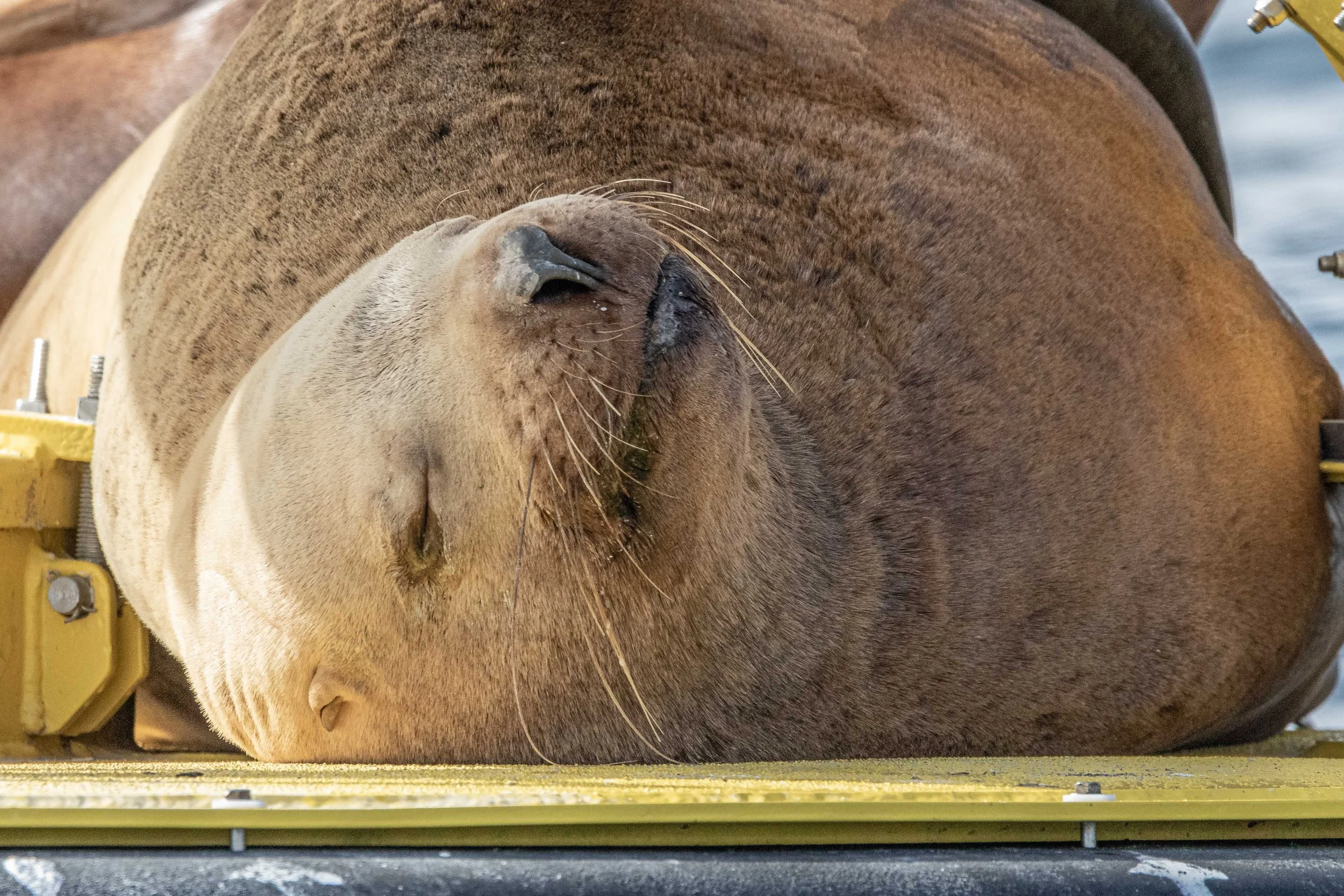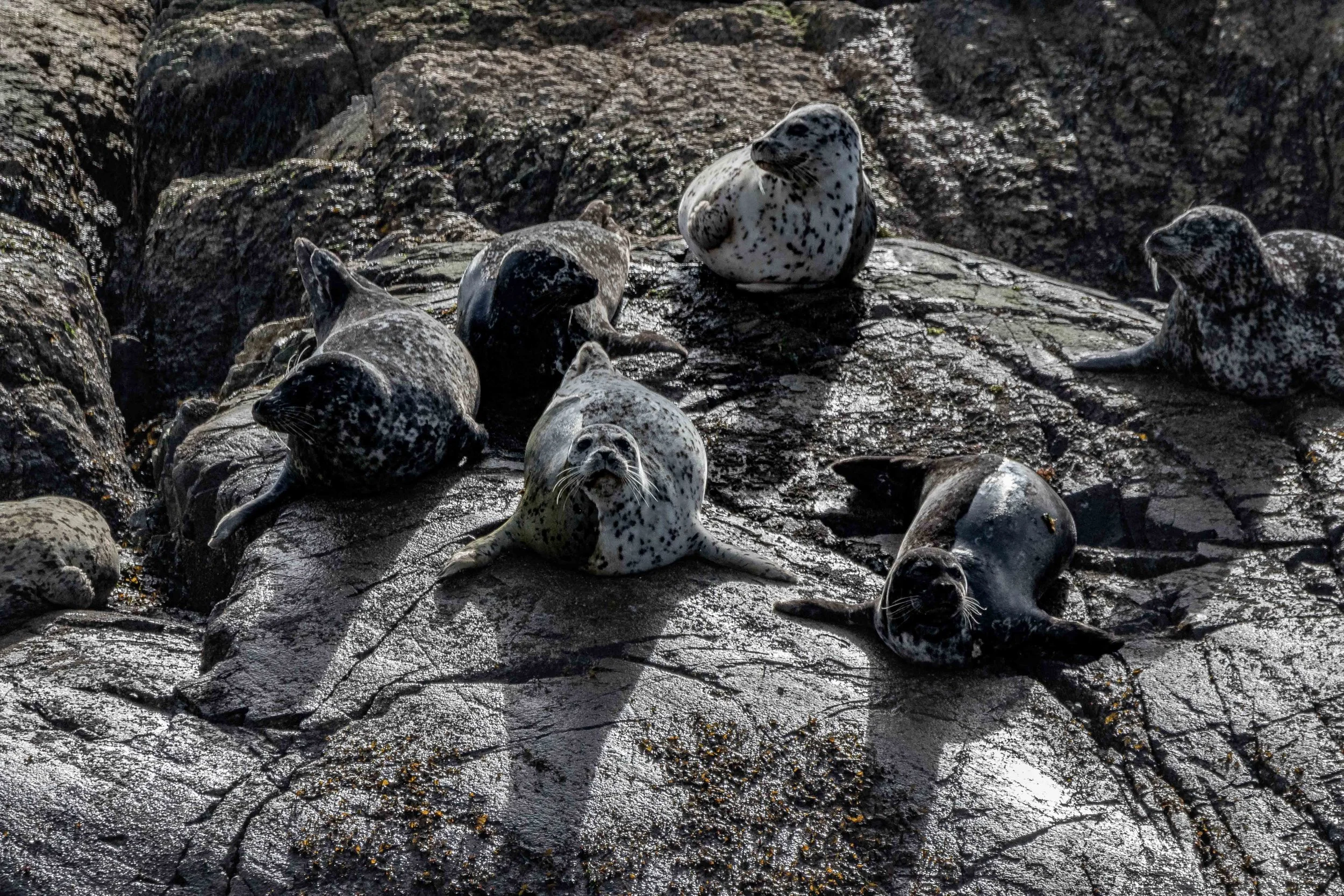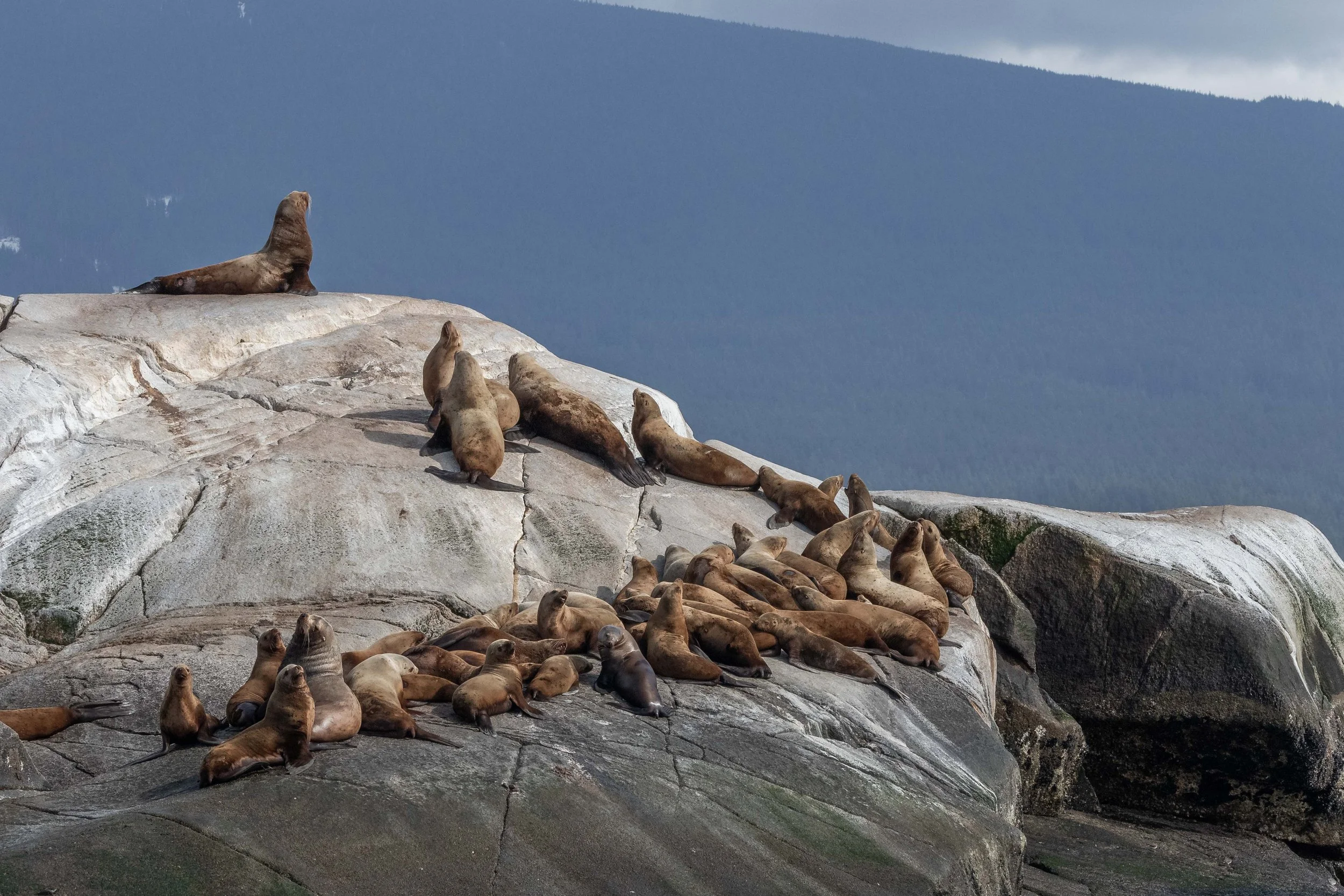March 13, 2024 - We were lucky enough to see a Herring Spawn on this trip, and of course we can not forget about our Eagles, Harbour Seals and Sea Lions!
The sun was out and we could finally feel spring just around the corner! With excitement, as this was our first open boat tour of the season, we loaded onto Cascadia and began our search. We decided to try our luck in the Strait of Georgia to begin, and off towards the Sunshine Coast we went. We arrived at Halibut Bank - a perfect spot to feed and rest according to our Sea Lions who frequent the yellow buoy. This is because of the unique geology of this particular area providing critical habitat for many species, as well as being a hot spot for oxygen and nutrient-rich waters. The seabed was carved out by glacial erosion, leaving a hill that remains underwater. The tides moving in and out of this area run into this hill, which causes a large upwelling of nutrient-rich water. When at the surface this water provides food for plankton, the base of the food chain, resulting in a high productivity area. Many animals are often found taking advantage of this and feeding here, just like our Sea Lions!
Next, we searched southeast east scanning the shore along Gibsons. From there we turned and began scanning the shores up the Sunshine Coast with fingers crossed we’d see a blow. We could smell something slightly unpleasant as we travelled along - what could be causing that smell? It was coming from the White Islets - not surprising as it was full of Harbour Seals and Steller Sea Lions. We love them all, but can’t deny they are a little smelly! After stopping to snap some photos we continued on.
Our search then brought us up to Half Moon Bay. From here we did a quick search around North Thormanby Island, but still no luck so we crossed the Strait and began scanning the shores near Parksville. Here we could see a bunch of commotion in the distance - many boats cruising along, accompanied by large flocks of Gulls and Cormorants. As we approached we could see the tell-tale milky turquoise water - it was a Herring Spawn! Herring is a keystone species - these small fish are incredibly important to the ecosystem. Keystone species make up the foundation of ecological food chains. If they were removed from their ecosystem, that ecosystem would drastically change. This is largely because of the vast amount of other species that rely on the herring as a food source. Herring are also a primary food source for the Coho and Chinook Salmon whose populations have been in decline, so protection of this species is dire. Being able to witness such an important event here in the Salish Sea was thrilling! After seeing the spawn, it was time to start heading back towards Nanaimo. We stuck close to shore with eyes peeled as we continued to scan. We missed our whales today, but we did see many other incredible species during the trip! All of our guests received vouchers to come out with us again and meet our giant friends!
Photos taken by onboard Marine Naturalist Vanessa Vereschahen.
A Steller Sea Lion taking a look at us!
Nothing like being softly rocked to sleep by the waves!
ZZZZZZZZZZZZZZ!
A pair of adult Bald Eagles.
Harbour Seals! How many can you spot in this picture?
Going down!
A cuddle puddle of Sea Lions.
A Steller posing for the camera. See the circular wounds, most likely from a Cookie Cutter shark helping itself to a meal.
The Herring spawn. Note the colour change in the water!
The birds are also happy about the spawn!
That gorgeous milky turquoise colour results from the Herring sperm and eggs being released into the water.
A Gull coming to check out the buffet!

